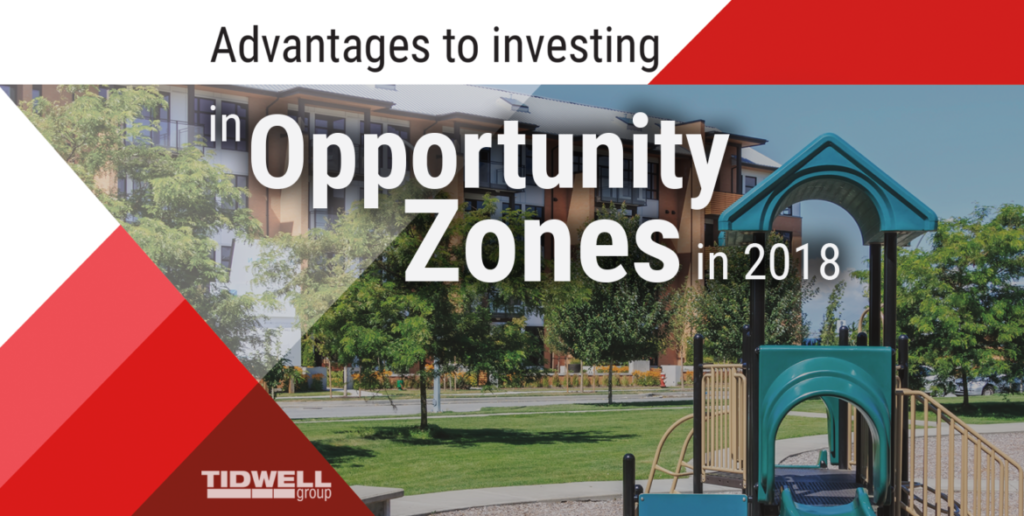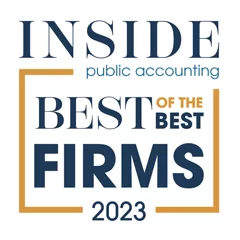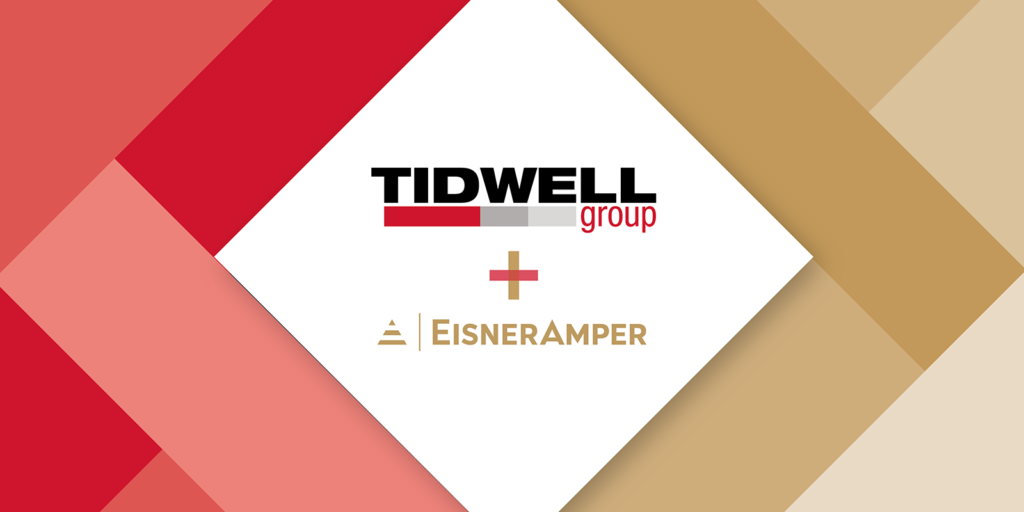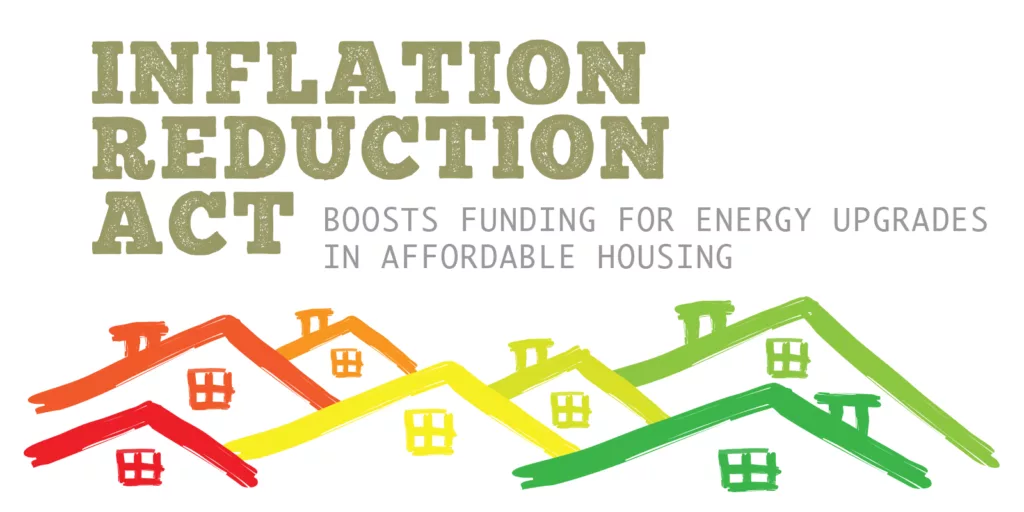BY QUINN GORMLEY AND TODD FENTRESS
A new Opportunity Zone program to encourage investment in low-income community business was included in the 2017 Tax Cuts and Jobs Act. New rules in the code[1] allows taxpayers to defer capital gains on the sale of stock, business assets, or any property (whether or not the asset sold was located or related to a low-income community). These gains, for purposes of this article, are referred to as “rollover gains.” To qualify for deferral, the taxpayer must invest the rollover gains in an Opportunity Fund or “O-Fund.” In addition, to qualify for deferral, at least 90% of the fund assets, directly or indirectly, must be located in certain low-income communities designated as Opportunity Zones.
Opportunity Zone Program: Key Terms to Know
- Opportunity Zones. The Governor of each state (and the Mayor of the District of Columbia) had until March 21, 2018 to nominate up to 25% of the qualified census tracts[2] as Opportunity Zones in each state. States that missed the March 21, 2018 deadline were provided a 30-day extension. The Secretary of the Treasury had 30 days to certify the Governor-nominated qualified census tracts (QO-Zones). The designation of these QO-Zones is effective until December 31, 2028.
- Opportunity Fund. An Opportunity Fund consists of any corporation or partnership that self-certifies that it shall invest at least 90% of its assets in QO-Zone businesses. The process for self-certification is yet to be determined. The statute does not provide requirements for the “certification.” However, regulatory requirements may follow the New Market Tax Credit Program (NMTC). It is likely that the Community Development Financial Institutions Fund (CDFI) will assist the Treasury Department in certifying the Opportunity Fund (QO-Fund). Although it is a NMTC requirement under certifications for the Community Development Entity (CDE), the statute does not specify who may sponsor or manage a QO-Fund. The CDFI assisted the Internal Revenue Service (IRS) with QO-Zone nominations. While there is currently no IRS guidance, it is expected by mid-summer 2018. The IRS updated their 2017-2018 Priority Guidance Plan in February 2018 specifically adding Opportunity Zone guidance to the list of new guidance projects in connection with the Act.
- Opportunity Zone Businesses. A QO-Fund may hold interest in a QO-Zone business directly or through a subsidiary partnership or corporation. In order to qualify as an Opportunity Zone Businesses: (1) substantially all of the tangible assets of the Business must be used in a QO-Zone; (2) at least 50% of the gross income earned by the business must be from the active conduct of a business in the QO-Zone; and (3) the business can hold only a limited amount of investment assets. Like the NMTC regulations, there are provisions for the preclusion of “sin businesses” and it is expected that some rules will be similar to the NMTC program “Qualified Active Low-Income Community Business” requirements. It is further anticipated that many of the rules to qualify as an Opportunity Zone Business will be similar to the rules regarding “Enterprise Zone Businesses” and those of “Qualified Gulf Opportunity Zone Property.”
- Qualified Opportunity Zone Property. Qualified Opportunity Zone Property is property that is: (i) qualified Opportunity Zone stock; (ii) Qualified Opportunity Zone partnership interest; or (iii) Qualified Opportunity Zone Business property. These property types are further described below:
- Qualified Opportunity Zone Stock (O Zone Stock) is stock of any domestic corporation that: (a) is acquired by the QO-Fund after December 31, 2017, at original issuance solely in exchange for cash; and (b) which, at the time such stock is issued and during substantially all of the QO-Fund’s holding period, is a Qualified Opportunity Zone business[3]. Should the corporation be newly formed, it does not need to constitute a Qualified Opportunity Zone Business on the date the stock is issued, but the corporation must be organized for the purpose of being a Qualified Opportunity Zone Business[4]. The stock does not qualify as O Zone Stock if the issuing corporation redeemed a significant amount of its stock within the two-year period beginning one year before the issuance of QO-Fund or redeemed any stock from the QO-Fund or any party related to the QO-Fund within a four-year period beginning two years before the issuance of the QO-Fund[5].
- Qualified Opportunity Zone Business (O Zone Business) A Qualified Opportunity Zone Business is a trade or business where: (i) substantially all of the tangible property owned or leased by the entity is Opportunity Zone Business Property (see below); (ii) at least 50% of its gross income is from the active conduct of a trade or business; (iii) it uses a substantial portion of any intangible property in such trade or business; and (iv) has less than 5% of its assets invested in non-qualified financial property[6]. A trade or business is not an O Zone Business if its principle activity is considered a “sin-business.”[7]
- Qualified Opportunity Zone Business Property (O Zone Business Property) Qualified Opportunity Zone Business Property is tangible property used in a trade or business that: (i) is acquired by purchase (within the meaning of §179(d)(2)[8]) after December 31, 2017; (ii) the original use of which in the QO-Zone commences with the O Zone Business, or the O Zone Business substantially improves the property; and (iii) “substantially all[9]“ of the use of which is in the QO-Zone. The property is substantially improved for this purpose if, during any 30-month period following acquisition of such property, there are additions to basis (iv) that equal the adjusted basis as the beginning of such 30-month period[10].
What Are the Benefits to Taxpayers?
Any taxpayer (individual, corporation, or trust, whether foreign or domestic), can elect to defer an unlimited amount of capital gain for the sale or exchange[11] of any property to an unrelated person by investing part or all of the proceeds, the rollover gain, in a QO-Fund. As mentioned above, such rollover gain can come from stock, business assets, personal assets, or any other property. Such property does not need to be located in an Opportunity Zone – only the rollover gain needs to be invested in an O-Fund that has 90% of its assets located in a designated Opportunity Zone.
How is the rollover gain executed?
To defer the tax on the rollover gain, the taxpayer must invest the rollover gain within 180 days, beginning on the date of the sale or exchange[12], in an amount equal to the gain to be deferred. The rollover gain is taxable when the investment in the O-Fund is sold or on the date of December 31, 2026, whichever occurs first. Only rollover gain realized in sales or exchanges on or before December 31, 2026, can be deferred under this program[13]. The amount of rollover gain subject to tax is generally the entire amount of such gain. However, if the QO-Fund investment is sold at a loss, only the actual gain realized would be taxable. To accomplish this, the following amounts would be taxed: (i) the lesser of the amount of deferred gain (rollover gain) or the fair market value of the taxpayer’s investment in the QO-Fund on the date of gain recognition minus (ii) the taxpayer’s basis in the QO-Fund[14]. For this purpose, the taxpayer’s basis in the QO-Fund is deemed to be zero[15], except as adjusted as follows: it is presumed that the rollover gain would then be taxed in the same manner as it would have been taxed at the year of sale or exchange (e.g. as capital gain from the sale of a business asset, capital gain that constitutes “net investment income” pursuant to §1411, “unrecaptured §1250 gain”. The rollover gain would be taxed at the rate in effect for the year of gain recognition (i.e. the year in which either the taxpayer’s interest in the QO-Fund is sold or December 31, 2026, whichever occurs first). The taxpayer’s basis in the QO-Fund is increased by the amount of rollover gain included in income[16], so the gain is recognized in 2026[17]. However, should the taxpayer continue to hold the property after 2026, such gain will not be taxed again when the taxpayer sells its interest in 2028.
To receive such partial forgiveness treatment, the taxpayer would hold an investment in the QO-Fund for at least 5 years and the taxpayer’s basis in the QO-Fund would be increased (from zero) by 10% of the amount of the rollover gain[18], so that on the sale of the QO-Fund investment, 10% of the deferred gain is permanently forgiven. A similar provision increases the taxpayer’s basis by an additional 5% (total of 15%) for a QO-Fund investment held for at least 7 years[19]. Because all the rollover gain would be taxable on 2026, the 10% or 15% basis increase could not offset rollover gain. However, it appears that (in theory), there would be a step-up in the basis of the QO-Fund. Therefore, this could result in the taxpayer offsetting gain from appreciation (if any) on the sale of the QO-Fund interest.
For example, assume that on July 15, 2018, a taxpayer was in a partnership that sold a property for $17MM and received gain in the amount of $10MM having an original tax basis of $7MM. Presume all of the rollover gain of $10MM was invested in a QO-Fund and then the taxpayer was liquidated out of the QO-Fund on August 30, 2023 (the 5th Year). This would result in only $9MM of the gain being subject to tax. If taxpayer was liquidated out of the QO-Fund on August 30, 2025 (the 7th year), only $8.5MM would be subject to tax.
Is There an Opportunity for Forgiveness of Future Gains?
Included in the Tax Cuts and Jobs Act provision is the ability for the investor who has held an investment basis in a QO-Fund for 10 years to have an investment basis equal to the fair market value of the investment on the date on which the investment is sold[20]. In continuance of the example above where the taxpayer made an investment in a QO-Fund on July 15, 2018 and held that investment until August 30, 2028[21]: On that date, the taxpayer sold its interest in the fund for $11.5MM, so the taxpayer’s basis would be stepped up from $10MM to $11.5MM[22], and the taxpayer would recognize no gain on the sale. Recall that in the 7th year, the taxpayer included $8.5MM in income, so the effect of the 10-year provision is to entirely exclude tax on appreciation.
What Is The 90% Test?
The 90% requirement is determined by the average of the percentage of Qualified Opportunity Zone property held by the QO-Fund as measured by the following: (a) on the last day of the first six-month period of the taxable year of the QO-Fund; and (b) on the last day of the taxable year[23]. The statute does not specify whether the percentage is to be determined by reference to the adjusted tax basis or fair market value of the Qualified Opportunity Zone Property held by the QO-Fund. We anticipate receiving further guidance from the IRS on this issue.
What if the Qualified Opportunity Fund Fails the 90% Test?
Upon failure to meet the 90% test in any year, the QO-Fund is not disqualified, but is required to pay a penalty for each month it fails to meet the requirement in an amount equal to: (a) the excess of (i) 90% of the aggregate assets, over (ii) the aggregate amount of Qualified Opportunity Zone property held by the QO-Fund; multiplied by, (b) the underpayment rate under §6621(a)(2)[24]. It is important to note that if the QO-Fund is a partnership, it appears that each partner is required to separately pay a proportionate share of the penalty[25]. There is a provision that allows the QO-Fund to demonstrate that its failure to meet the test was due to a “reasonable cause”[26]. This is also an area that we anticipate the IRS will provide further guidance as the statute is not specific on how assets are to be valued for this penalty purpose (i.e. by adjusted tax basis, FMV, or some other method). The rules do not provide clarity on how a penalty can be determined and applied on a monthly basis when the 90% test is said to be determined annually.
To discuss your affordable housing project needs, please contact Quinn Gormley or Todd Fentress.
Meet the Authors
Quinn Gormley
Tax and Consulting Partner
512.693.2187
Todd Fentress
Columbus Managing Partner
614.528.1441
References:
[1]IRC Code §1400Z-1 and §1400Z-2 were added by §13823 of the 2017 Tax Act, effective beginning on December 22, 2017.
[2] A census tract where the poverty rate is 20% or higher or has a median income that does not exceed 80% of the area median income of the metropolitan area or statewide median income.
[3] §1400Z-2(d)(2)(B)
[4] §1400Z-2(d)(2)(B)
[5] §1400Z-2(d)(2)(B)(ii)
[6] §1400Z-2(d)(3(A)(i) and §1400Z-2(d)(3)(A)(ii), Nonqualified financial property includes debt, stock, partnership interest, options, futures contracts, forward contracts, warrants, notional principle contracts, annuities or other similar property such as bank accounts, checking accounts, and other time and demand deposit accounts. It does not include reasonable amounts of cash or debt instruments with a term of 18 months or less
[7] §1400Z-2(d)(3)(A)(iii)
[8] It should be noted that §1400Z-2(e)(2) substitutes 20% in place of 50% in the related party test
[9] §1400Z-2(d)(2)(D)(i). The “substantially all” requirement also appeared in the GO Zone Property provision and was interpreted to mean 80% or more of the property
[10] §1400Z-2(d)(2)(D)(ii). It is believed that under this provision Acquisition/Rehabilitation of Multi-Family projects may be precluded from using investment proceeds from QO-Funds since the investment in the basis must equal the substantial improvement made within 30 months.
[11] §1400Z-2(a)(1)(A)
[12] The Act is unclear on whether the taxpayer could contribute the property received in an exchange to an Opportunity Fund (or if the Opportunity Fund could accept such contribution), or if the taxpayer would need to contribute cash equal to the value of the property received.
[13] §1400Z-2(a)(2)(B)
[14] §1400Z-2(b)(2)(A)
[15] §1400Z-2(b)(2)(B)(i)
[16] §1400Z-2(b)(2)(B)(ii)
[17] §1400Z-2(a)(2)(B)
[18] §1400Z-2(b)(2)(B)(iii)
[19] §1400Z-2(b)(2)(B)(iv)
[20] §1400Z-2(c). It is anticipated that the taxpayer must elect for this provision to apply, in addition to the initial election to defer the Rollover Gain tax
[21] It is uncertain how the provision would be applied if the 10-year period extended beyond December 31, 2028, when the designations of Opportunity Zones expires
[22] §1400Z-2(c) provides that the taxpayer’s basis is stepped up to fair market value
[23] §1400Z-2(d)(1)(A), §1400Z-2(d)(1)(B)
[24] §1400Z-2(f)(1). §6621(a)(2) indicates the underpayment rate is the short-term rate determined under §1274(d) plus 3% points. The April 1 2018 underpayment rate is 5%.
[25] §1400Z-2(f)(2)
[26] §1400Z-2(F)(3)












